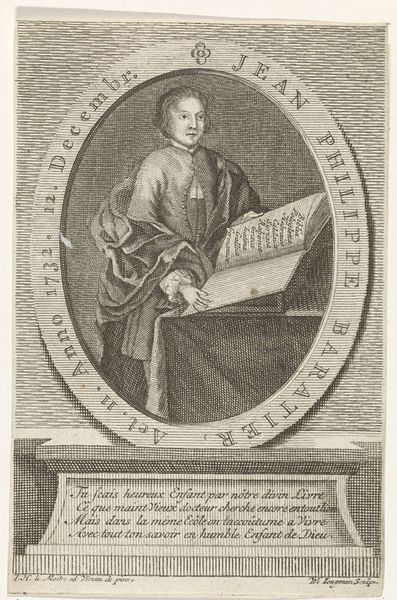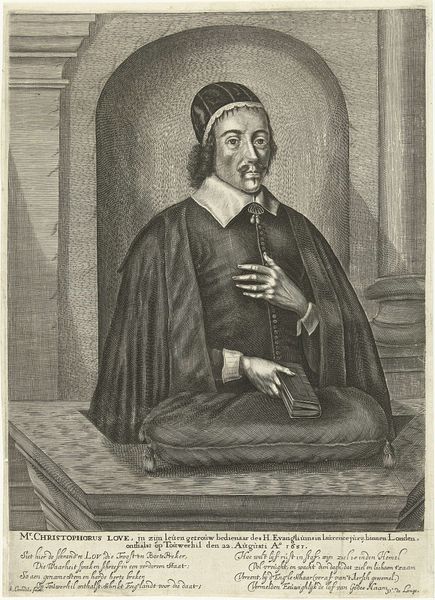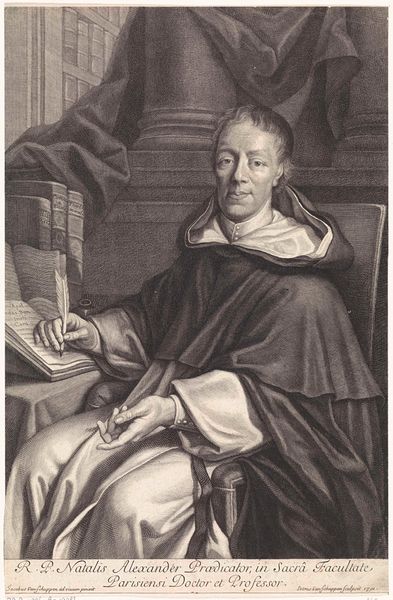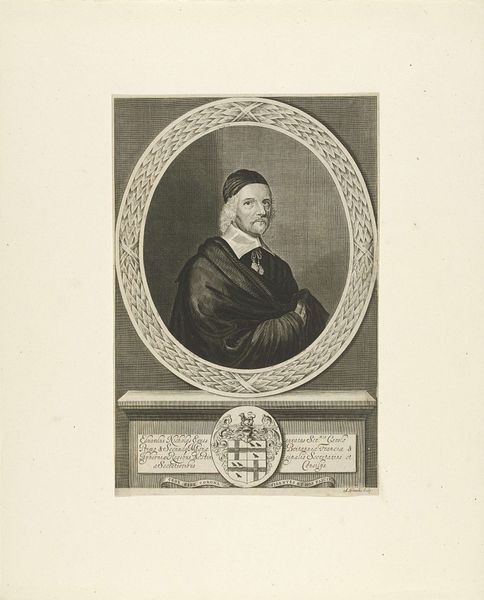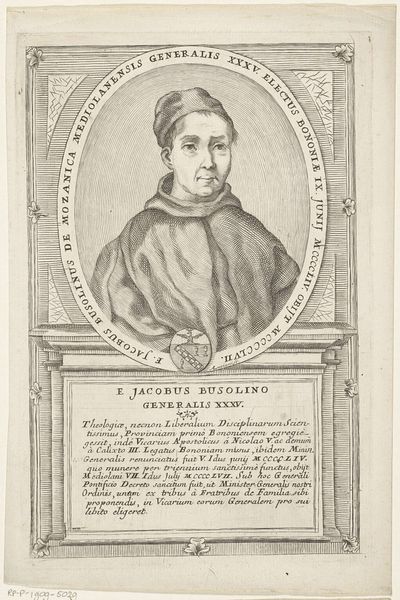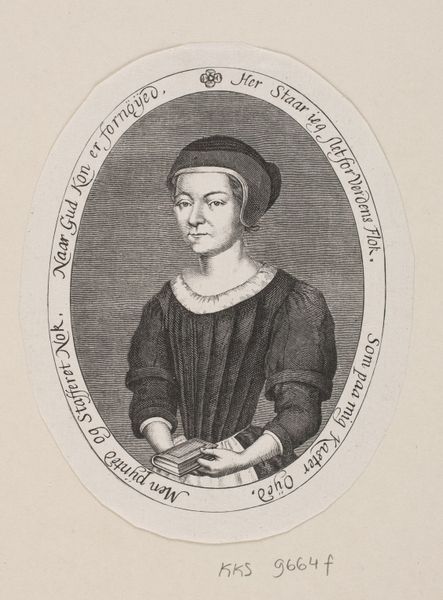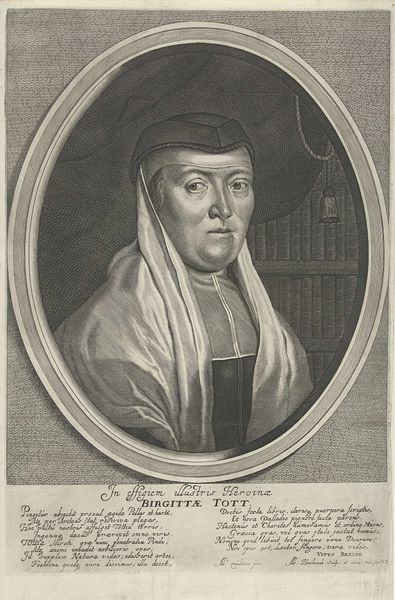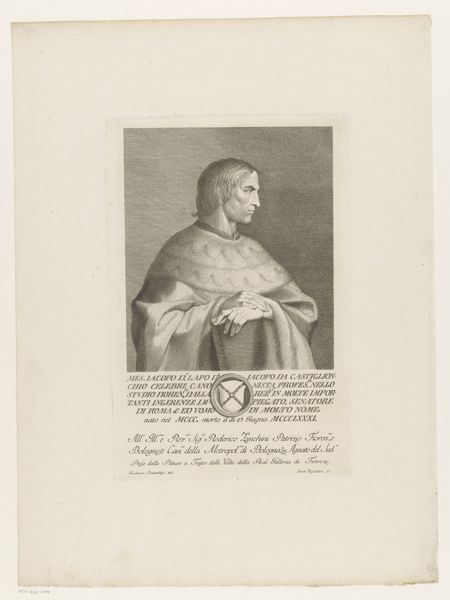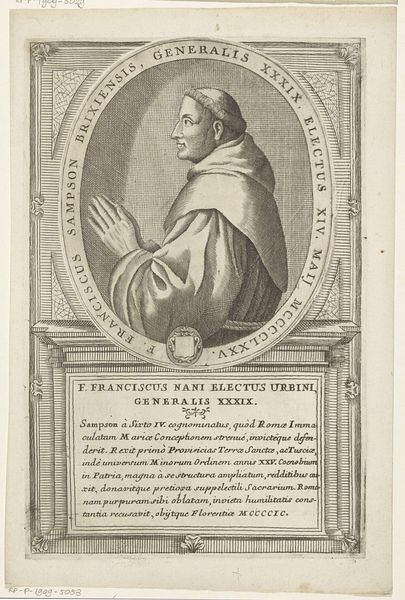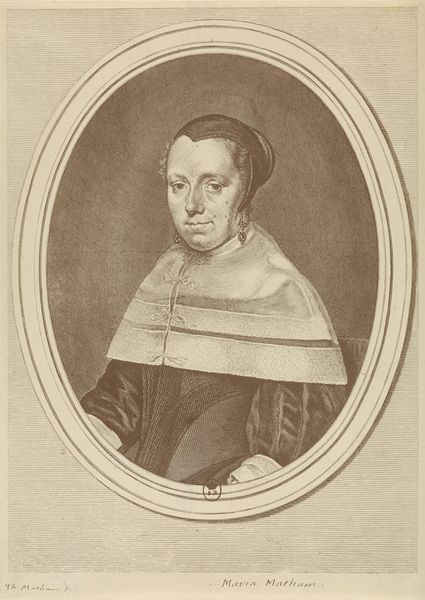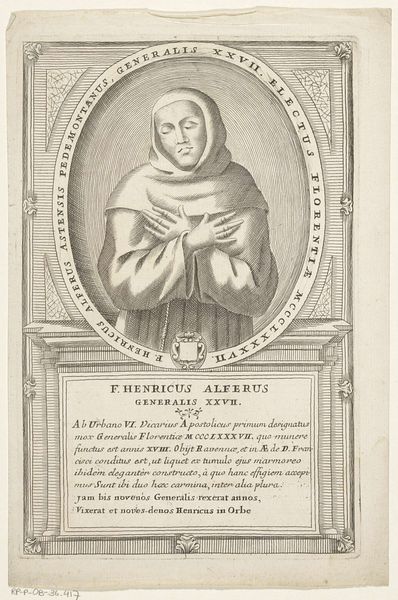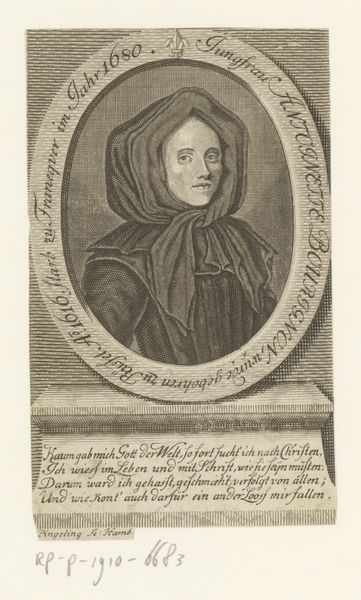
drawing, print, ink, engraving
#
portrait
#
drawing
#
baroque
# print
#
old engraving style
#
historical photography
#
ink
#
engraving
Dimensions: height 290 mm, width 203 mm
Copyright: Rijks Museum: Open Domain
Frederick Bloemaert made this portrait of Thomas à Kempis, probably in the mid-17th century, using engraving. The fine lines were carved into a metal plate, which was then inked and pressed onto paper. Look closely, and you'll see how Bloemaert used different densities of lines to create shading and volume. This was labor-intensive work, requiring immense skill and precision. The engraver wasn’t just copying an image, but interpreting it through a specific process. Engraving was a key technology in the early modern period, allowing images to be reproduced and disseminated widely, and it was a skilled trade, situated between art and industry. The fact that Bloemaert chose this medium speaks to the growing importance of print culture at the time, a shift that made art more accessible, but also turned it into a commodity. Considering the material and the making, we can see this portrait not just as a representation of an individual, but as a product of its time, reflecting the changing landscape of art, labor, and consumption.
Comments
No comments
Be the first to comment and join the conversation on the ultimate creative platform.
